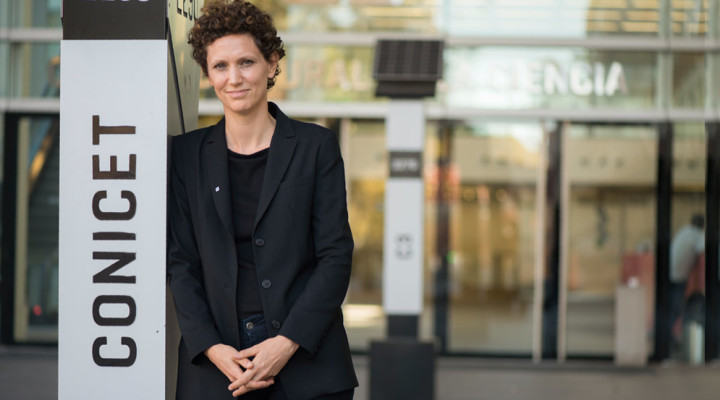“There are several ways of being a man, a woman and other gender identities”
Researcher Vanesa Vázquez Laba talks about sexualities, dissident genders and the violence they suffer from.
May 17th was declared the International Day against Homophobia, Transphobia and Biphofia to raise awareness on discrimination and cases of violence dissident sexualities suffer from. It was chosen on May 17th because on that day in 1990, the World Health Organization (WHO) eliminated homosexuality from the International Classification of Diseases.
Sociologist Vanesa Vázquez Laba, CONICET associate researcher at the Instituto de Altos Estudios Sociales (IDAES) of the Universidad Nacional de San Martín, explains that the LGBTIQ+ (lesbian, gay, bisexual, transgender, intersexual and queer, with the + sign that covers other identities) is the political fight for the self-perception gender, that is to say, ‘to be what one feels and wants to be.’
“We cannot think about gender in binary terms, that is to say, men and women. The sexual liberation movement of gays and lesbians in the ‘70s as well as the movement and queer thought in the ‘90s made those categories, which historically were conceived as natural, explode”, the scientist says.
The homo, lesbian and transphobia are the discriminations against people with dissident sexual orientations or non-hegemonic gender identities. It is the violence against those bodies and sexualities that do not match the model of heterosexual ‘women’ or ‘men’ that is reproduced.
“Modernity built a gender binary speech –men/women- where sex appears as natural. The feminist thought took some decades to debate the biology postulates and their sex, gender and sexuality guidelines. To adopt a queer identity means to challenge the biological discourse and do not fulfill society’s expectations for that body, that anatomy”, she adds.
What do you mean by ‘that definition of the biological discourse’?
For a long time, society considered dissident sexualities as ‘disgusting’ and ‘heinous’, and for medicine there were pathological. As soon as a baby is born, after observing the genitals, the doctor “sexually divides” the baby into a man or a woman. But those new born bodies, in some cases, have different size in their genitals that can be sometimes combined, or can have both sexes in one body, so medicine decided to call them ‘hermaphrodites.’ The hermaphroditism was considered as a pathology, and according to its definition, these people did not belong to any sex.’ So medicine intervened to redefine them. But then there was a movement of intersexual people defending their bodies and rejecting the idea of the reassignment towards one sex.
That intersexuality refers not only to the anatomical characteristics but also to the experience of the body affected by all social factors. From biology, is there any current that tries to include these dissident sexualities?
From the research team on Sexualities, bodies and violences of the IDAES, we study some feminist biologists that research into those topics, such as Anne Fausto-Sterling from the USA. For her, intersexuality is diverse, and there are different anatomical settings from the combination of the genitals, therefore one cannot talk about one type of intersexual body. Fausto-Sterling also reveals that from statistics, most intersexuals raised as women wanted to “masculinize” their feminine bodies and, to a lesser extent, intersexual men sought to change for the other sex. But gender identities are not homogeneous, as Mariana Álvarez Broz states in one on-going study. She shows that there are material and symbolic differences in the inner part of the transmasculinities and transfemininities. In other words, there are several ways of being a a man, a woman and other gender identities.
How is it possible to include all this corpus of knowledge about gender and sexualities for integration?
The policies have to include positive discrimination, in the sense that they have to focus on vulnerable social groups. For example, at the Universidad Nacional de San Martín we are working to increase the number of trans students. The research is a basic tool to incorporate trans people into the labor market and improve their quality of life, and because many of them wish to become professionals. But there are obstacles hinder their incorporation and stay: the administrative and building matters, and then the coexistence in the classroom and acceptance of sexual diversity from their pairs and professors. This cultural transformation can only take place through institutional policies and concrete actions such as, a counseling department that provide their services and intervene in discrimination and gender violence situations through a behavior protocol and training on the subject to students, professors and the rest of the staff at the university. This is just the beginning; we have a lot to do.
By Ana Belluscio.
